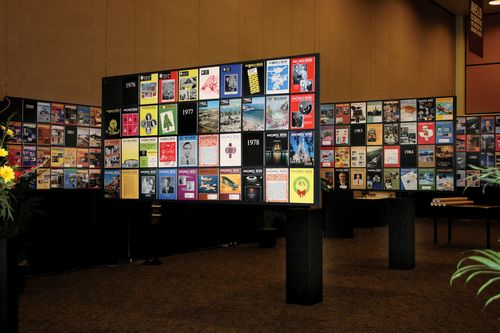The glossy trade publication is a fixture of commerce. But is it a fading fixture?
A chart published by American Business Media, the association representing the trade publishing industry, reports that advertising pages fell 3.1 percent in January 2007 while ad revenues slipped 2.8 percent relative to January 2006.
The chart is a real pain to read but the fine print doesn’t hide the erosion of print revenues across most sub-sectors of the trade print industry. For instance, publications covering movies, radio and TV lost 10.9 percent in pages in Jan ’07 over Jan ’06, while ad pages in health care publications slid 9 percent during the same period.
There were some increases: architecture, design and lighting boosted Jan 07 ad pages 6.85 percent over the prior year, while ad pages in science, research and development trade pubs jumped 11.16 percent.
In an accompanying press release trade press group noted that:
“for the first time in history, face-to-face (trade show) revenue has surpassed that of its print counterpart: In 2006, business media trade shows accounted for 36percent ($11.3 billion) of industry revenue; magazines accounted for 35 percent.”
I could not find a chart showing these two revenue lines over time so I don’t know whether the trade show revenues have grown or whether the erosion of magazine ad pages has raised the profile of face to face events in the industry’s revenue mix. The release quotes American Business Media president Gordon Hughes as saying that trade show revenue grew 10 percent in 2006, while “E-media” (online) grew 22 percent. But I could not find a figure that showed the online revenues as a percent of the industry total.
Offshore this! In reading a Poynter Institute report about a copy editor’s convention (gee, imagine the fund titles, like — “Capital punishment: how to hurt reporters who wrongly capitalize Jargon?) I came across a reference to a prior posting that I had missed.
That November 2006 report was titled Offshoring: Coming Trend for Copy Desks? and while it appears that, so far, real deadline-driven newspaper copyediting had not yet been moved from the news desk to some less expensive foreign locale. But the author of that Poynter commentary, Detroit News recruitment editor Joe Grimm, seems to suggest it might just be a matter of time:
“Stateside copy editors, traditionally on the right side of supply-and-demand job security, are on the wrong side of offshoring. Some of the safest jobs in the newsroom are becoming the most exportable . . . The problem is that globalization, digitization and tight supply-chain management let all kinds of companies break down jobs, divvy up the parts, ship the components around the world to the best bidders and reassemble them all by deadline. The Newspaper Guild and others have fought offshoring, but protesting won’t dent the incentives.”
Grimm suggests that the best way to protect newsroom jobs “lies in developing the skills required to make yourself not only more essential but more satisfied and competent in the work you want to do.”
Gee, thanks, Joe! I don’t know what I’d have done without that Poynter! By the way, boys and girls, you can get more great career advice tips from Joe Grimm’s blog.
Meanwhile, if you do work on the desk, to use newspaper parlance, you might read a summary of what was really talked about at that copyeditors’ confab. As for certain smart-ass reporters who think they can’t be replaced by any old English-speaking scribe from abroad (suddenly the Biblical story of Joseph in Egypt sprang to mind) let me suggest that you scan a recent blog posting in which I summarized a report on online newsroom job skills. It says: there are no reporters, only copyeditors, so suck it up and learn PhotoShop and HTML.
Hey, come to think of it, freshen up that coffee, Mr. Grimm!
